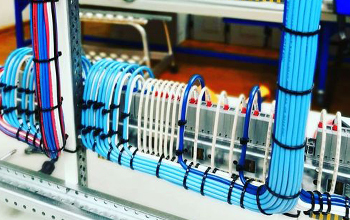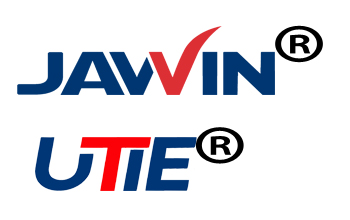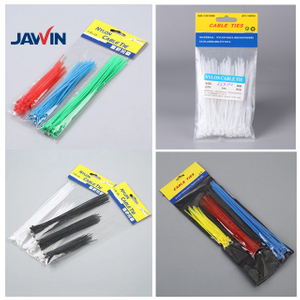E-mail: kevon@chjoin.com
willa@chjoin.com
Whatsapp/wechat/Mobile: 0086-15057778200
Whatsapp/wechat/Mobile: 0086-13732506786
Views: 17 Author: Site Editor Publish Time: 2020-08-19 Origin: Site

What are cable ties used for? They’re fasteners that bundle your cables and wires together to keep them organized and prevent damage. They come in different sizes, lengths, materials and even colors. The different uses of cable ties vary across industries, but what they all have in common is that they’re the most effective way to manage your cables.
First, let’s get a picture of the type of cable ties available. The table below is by no means exhaustive, as there are subsets of cable ties within this table. For example, standard cable ties can be weather resistant, which gives them different applications than their cousins’.
Standard cable ties are a fantastic all-rounder, but when you need specialized cable ties, you can get those too.
Overview
| Standard cable ties | Self-locking Usually single use Available in different colors for color coding |
| Releasable cable ties | Can be used more than once – also known as re-usable Can be opened to add more cables Some styles available in different colors |
| Push mount cable ties | Constructed with a mounting device, making additional fixings unnecessary Adhesive base or affixed with screw Fast mounting process More secure fastening Snaps into pre-drilled holes |
| Screw mount cable ties | Ideal for fastening to either metal or wooden panels Can be either screwed or bolted down |
| Belt cable ties | Flexible design Quick release mechanism |
| Marker cable ties | Essentially a standard cable tie, but with a tag for writing on |
| Heavy duty cable ties | For bundling heavy cables |
| Stainless steel cable ties | Withstands high temperatures Radiation, vibration and flame resistant |
| Heavy duty strap and buckle | For heavy duty applications; max tensile strength of 350 lbs. Steel teeth on buckle grip the strap permanently Buckle is preassembled on one end of the strap |
| Double headed cable ties | Keeps two wire bundles separated No need for additional cable ties |
| Hook and loop cable ties | Use when you need a temporary bond Can be fastened and released several times Ideal for fragile cables Re-useable |
Why materials matter
Materials play a large role in determining the application. You’ll find cable ties in these materials:
Nylon
The most common material for cable ties, nylon is a tough material with good thermal, and abrasion resistance. It also resists fuels and most chemicals. Nylon 6/6, the grade most often used for cable ties, meets UL94 V-2 flammability ratings and has a working temperature range from -40°F to 185°F.
Nylon cable ties can be heat stabilized for continuous or extended exposure to high temperatures of up to 250°F. The cable tie manufacturing process can also produce UV stabilized ties for outdoor use. For example, you can have the same cable tie, but manufactured for different applications.
Example:
| Natural | ||
| Black UV stabilized |
Examples include:
Heat stabilized standard cable ties
Beaded cable ties
Double headed cable ties
Marker cable ties
Polypropylene
If you’re looking for chemical resistant cable ties, consider polypropylene (PE). It resists acids, polyhydric alcohols, neutral salts and basic salts, making it a better choice in this instance than nylon. It does have a lower tensile strength than nylon 6/6, but it’s also more flexible. Polypropylene can also stand up to UV exposure.
Just as you can get the same cable tie formulated differently, you can get the same cable tie in different materials. For example, beaded cable ties are available in nylon or polypropylene.
Examples include:
Beaded cable ties
Ball cable ties
Standard cable ties, locking
Belt cable ties
Low density polyethylene
Low density polyethylene (LDPE) has a high-ductile nature and less-than-average tensile strength. As a material for cable ties, it’s not commonly used. However, it stretches and conforms well to surfaces and has excellent chemical resistance to dilute and concentrated acids, alcohols, bases and esters, so it has its uses. For these reasons, it’s often used for ties that are meant to bundle cables temporarily.
Examples include:
Hook and loop cable ties
Stainless Steel
Stainless steel cable ties provide high tensile strength. They can also stand extremely high temperatures, from –328°F to 1000°F. There are two types of stainless steel used in cable ties: 304 and 316. Type 304 is used for general purposes, with both indoor and outdoor applications. When corrosion is a threat, it’s Type 316 you need.
Examples include:
Stainless steel cable ties
Applications for cable ties
Now that you understand the difference in materials, let’s look at applications.
Aerospace
The average passenger airplane wields 124 miles of cables, so excellent cable management is absolutely critical. The types of cable ties needed vary. For small, tight spaces, miniature heat-stabilized cable ties are a must. For hoses and larger cables, heavy duty heat stabilized cable ties are needed. Push mount cable ties also work well for aerospace and it’s best to go with a heat-stabilized option for thermal endurance.
| Miniature heat-stabilized cable ties |
| Push mount cable ties, heat stabilized |
| Heavy duty heat stabilized cable ties |
Automotive
If your cable ties are going under the hood, chemical and heat resistance should be your priority. In addition to standing up to oil, greases and gasoline, your cable ties should also be able to withstand harsh environments.
Consider push mount cable ties made of heat-stabilized nylon 6/6, rated UV94 V-2, and serviceable to 239˚F. Stainless steel cable ties also offer excellent resistant to high temperatures and weathering.
Other cable ties for automotive applications include standard cable ties and screw or adhesive cable tie mounts, and arrow head cable ties.
| Push mount cable ties |
| Stainless steel cable ties |
| Standard cable ties |
| Arrow head cable ties |
Equipment manufacturing
Industrial generator parts and HVAC components vibrate. If your application is indoors, screw mount cable ties are the ideal solution. Fir-tree mount cable ties add additional stability against vibrations, while providing protection against debris ingress.
For outdoor applications, you need cable ties that can stand up to the weather and a range of temperatures. Weather-resistant standard cable ties work well. You’ll need a heat resistant cable, of course. For this, heat-stabilized cable ties, which also perform in extreme cold weather are the ideal complement.
| Screw mount cable ties |
| Fir-tree mount cable ties |
| Weather-resistant standard cable ties |
| Heat-stabilized cable ties |
Consumer appliances and electronics
You’re working with limited space and will need cable ties that resist heat. This goes for consumer electronics too. An excellent choice in these conditions is an arrow head cable tie. Simply push it into your pre-drilled hole. Also look at heat stabilized cable ties. These are exceptionally strong with the additional benefit of being cost effective. Vinyl-coated adjustable clamps are actually ties and combine fantastic flexibility with secure mounting.
For temporary bundling of wires on computers, use hook and loop cable ties.
| Arrow head cable ties |
| Heat stabilized cable ties |
| Vinyl-Coated Adjustable Clamp |
| Hook and loop cable ties |
Enclosures and cabinets
An indoor data cabinet can fall victim to cable spaghetti, which happens when cables become one big mess. Standard cable ties, which come in different colors for color coding, can prevent this. Marker cable ties can also prove helpful, allowing you to write identification information on a tag attached to the cable. Beaded cable ties are another option. You can link them together to get your desired length and some are reusable.
For an outdoor utility cabinet or any outdoor cable enclosure, UV resistance is important. Weather-resistant cable ties are an ideal solution. Beaded cable ties can work here too, if they’re UV resistant. For heavy duty applications try strap and buckle ties or stainless steel cable ties.
| Standard cable ties |
| Colored cable ties |
| Marker cable ties |
| Beaded cable ties |
| Weather-resistant cable ties |
| Beaded cable ties |
| Strap and buckle ties |
| Stainless steel cable ties |
Construction and mining
In the construction and mining industries, a range of cable ties are necessary. Some need to stand up to harsh conditions while others need to handle fragile cables – some should even go beyond the call of duty.
For example, you can secure scaffolding netting and sheeting, and even the scaffolding itself, with extra heavy duty cable ties. Made of nylon 6/6, these ties give you high-tensile strength in any demanding application. Stainless steel cable ties, Type 316, give you corrosion and high temperature resistance. They’re also weather resistant while providing outstanding chemical resistance. Heavy duty strap and buckle ties are perfect for demanding applications. The steel teeth on the buckle grips the strap permanently while the acetal strap has excellent weatherability.
| Extra heavy duty cable ties |
| Stainless steel cable ties |
| Heavy duty strap and buckle ties |
Wenzhou Join electric Co.,ltd is an ISO9001 certified professional manufacturer of nylon cable ties for more than 15 years since 2005.
Our main products covers:Nylon cable tie,cable gland,clips,connectors and wiring protectors.


